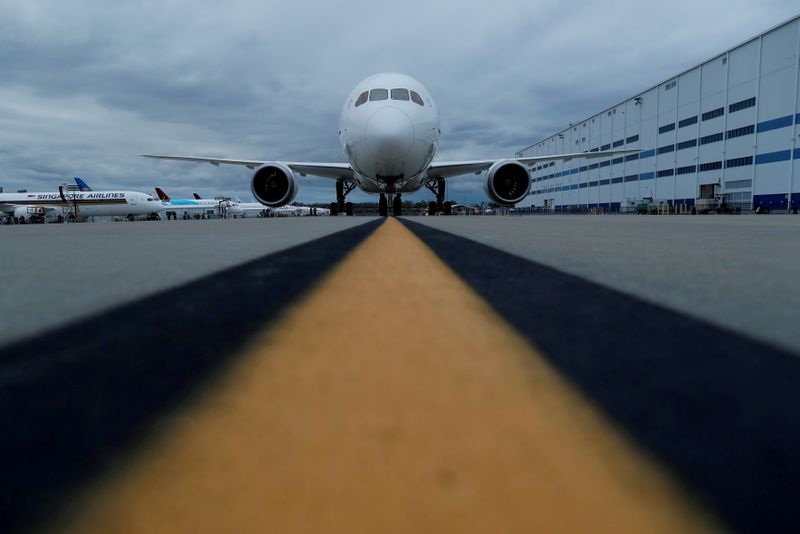By Eric M. Johnson and David Shepardson
SEATTLE/WASHINGTON (Reuters) - A U.S. Federal Aviation Administration decision to bring in-house final checks on four Boeing (NYSE:BA) Co 787 jets is the latest signal of the agency's tougher scrutiny of the embattled U.S. airplane manufacturer.
The FAA said late Wednesday it was taking "a number of corrective actions" to address multiple production issues on the advanced carbon-composite twin-aisle aircraft. These include structural integrity flaws and potential safety hazards, it said in an email to Reuters.
"One of the actions is retaining the authority to issue (Airworthiness Certificates) for four specific aircraft," it said. "We can extend the AC retention to other aircraft if we see the need."
The FAA told Boeing of its decision in a January letter reviewed by Reuters.
The move comes as the planemaker has faced tougher scrutiny in the wake of two crashes involving its 737 MAX jet that killed 346 people, triggering a 20-month safety ban that U.S. regulators lifted last November.
A September U.S. House report into the two crashes faulted "grossly insufficient oversight by the FAA."
"With all the accusations of an overly-close relationship between (the FAA) and Boeing, they're eager to emphasize that they're deploying more resources for inspections, exercising more authority, and scrutinizing work more closely," said Richard Aboulafia, an analyst with Teal Group.
"We'll likely see more actions like this."
FAA Administrator Steve Dickson said last month the agency was holding Boeing accountable and added he "reiterated to Boeing's leadership time and again that the company must prioritize safety and regulatory compliance, and that the FAA will always put safety first in all its decisions."
For most aircraft deliveries, Boeing employees officially designated to act on behalf of the FAA conduct final airworthiness checks before a jet is handed over to an airline.
But over the past several years FAA inspectors themselves have taken over that work on a small number of aircraft as part of its oversight.
The FAA said its latest decision not to outsource the four new checks on the 787s was different from those more routine checks.
"If the FAA is increasing oversight, that says they have been exposed to things that should not have happened," said Peter Lemme, a former Boeing engineer and consultant.
"Boeing is at one strike for sure and maybe two strikes down. If they find something now, it would be infinitely worse."
Boeing said Thursday it was "encouraged by the progress our team is making on returning to delivery activities for the 787 program. We have engaged the FAA throughout this effort."
Last month, the planemaker agreed to pay $6.6 million to the FAA as part of a settlement over quality and safety-oversight lapses going back years.
The fine stemmed from a 2015 FAA settlement from Boeing, including a $12 million fine, to resolve multiple pending and potential enforcement cases.
Boeing is also working through forensic inspections and painstaking repairs to fix defects embedded in more than 80 parked 787s that have halted deliveries for months.
The inspections and retrofits could take up to a month per plane and are likely to cost hundreds of millions - if not billions - of dollars, although the final bill depends on how many planes in service and undelivered have issues, an industry source said.
Boeing remains on course to resume deliveries of a number of 787s this month, a second source said.

In January, Boeing took a $6.5 billion charge on its forthcoming 777X mini-jumbo, as the cost of tighter regulation and sagging long-haul demand hit its next flagship development. [PL4N2K232P]